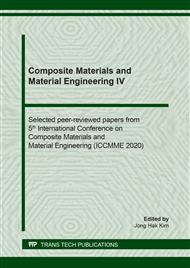p.3
p.9
p.15
p.22
p.28
p.34
p.40
p.46
Determination of Interlaminar Fracture Toughness of CFRP Composite in Mode I Using Numerical Simulation with Cohesive Elements
Abstract:
This paper deals with the determination of parameters of the interlaminar failure of the CFRP composite laminate in mode I using numerical simulation with cohesive elements. Knowledge of these parameters is crucial to enable prediction of interlaminar strength of laminates using numerical simulations based on the finite element method with cohesive elements. There are several standardized experimental measurements for determining mode I parameters but not all that are needed for numerical simulations. However, the determination of these parameters and their evolution during cohesive failure is very problematic even if the experimental data is available. This paper deals with the design of a methodology for how to determine these parameters using the fitting process of experimental measurement and numerical simulation. The experimental measurements were done on double cantilever beam specimens according to ASTM standards. The numerical simulations were performed in the Siemens Simcenter software with NX Nastran solver. The numerical model with the obtained parameters shows very good agreement with the experimental measurements. compared to the average experimental values and the analytical calculation, the difference of fracture toughness is up to 1.6 %
Info:
Periodical:
Pages:
15-21
Citation:
Online since:
June 2020
Authors:
Price:
Сopyright:
© 2020 Trans Tech Publications Ltd. All Rights Reserved
Share:
Citation:


